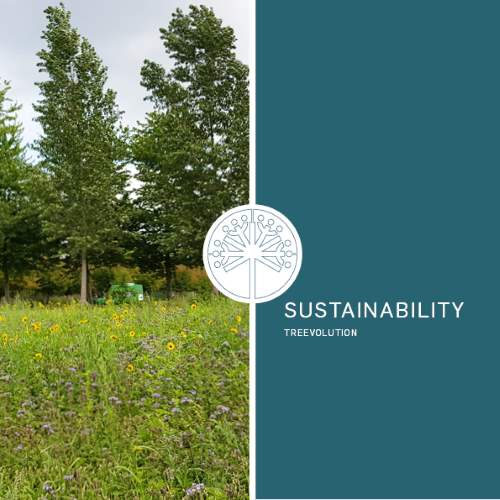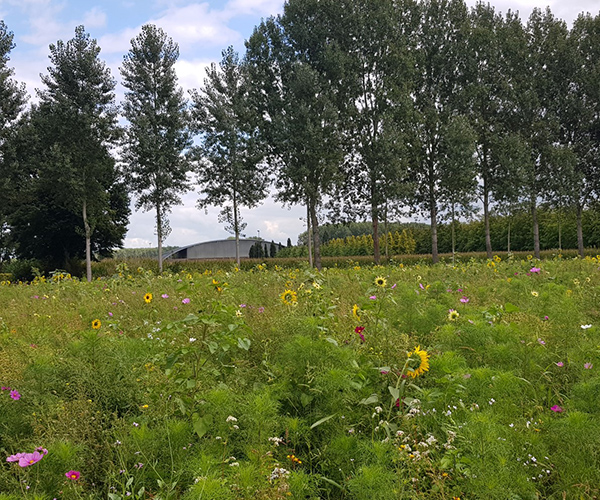

Bees are a crucial part of our ecosystem: without them, the entire food chain would be in jeopardy. Since 2014 at Van den Berk Nurseries we have been consciously engaged in making our nursery bee-friendly. In 2015 we began sharing information with clients and other stakeholders about honey plants and in 2019 we signed up to the Dutch government’s National Bee Strategy.
The total area of the nursery plots in Sint-Oedenrode is around 350 hectares. The enormous collection of trees includes lots of honey plants that blossom in successive periods. Even in February you can find blossoming honey plants in the nursery. The peak blossoming period is from April to June. After that the number of honey plants in blossom declines. Some species, like Tetradium and Heptacodium, blossom late and are very popular with bees, but their numbers are smaller.
In general, late summer is a difficult period for bees. In order to ensure sufficient sources of nectar/pollen, we take additional measures:



We have two beekeepers at the nursery. One is an amateur beekeeper, a tree nursery employee who produces honey as a hobby. The other is a professional beekeeper who supplies bee colonies to the horticulture sector. Both position their hives in nursery plots where there are lots of honey plants in blossom. The amateur beekeeper usually puts hives in a fixed position where the bees will thrive during the flying season. In contrast, the professional beekeeper regularly moves his hives. Both beekeepers’ bees contribute the pollination of trees in the vicinity and to the continuity of bee colonies.
The book ‘Van den Berk on Trees’ describes 1,100 trees and shrubs. A symbol is used to indicate which species are honey plants. On the website you can find photos and descriptions of 1,600 trees and shrubs. A search filter enables you to select honey plants in order to explore the options. The pollen and nectar values of many species are given too. We regularly organise Expert Tours on this subject for landscape professionals. During these tours, we show participants a range of good honey plants and they are also given a talk by a beekeeper at the nursery. Newsletter subscribes receive updates about forthcoming tours.